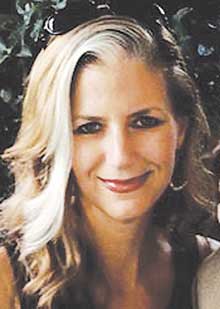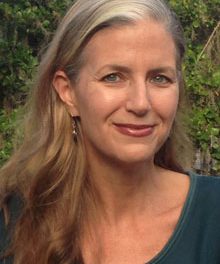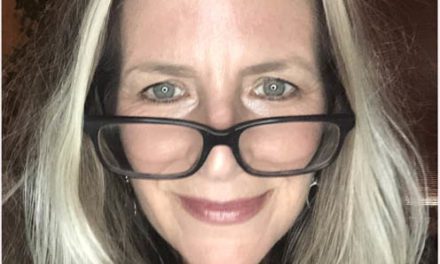 By Margaret Evans, Editor
By Margaret Evans, Editor
One of the best things about having an only child? When your kid’s in a chatty mood, she has no one to chat with but you.
(I know you young moms are scratching your heads, thinking, “What? How is this a good thing?” But trust me when I tell you – teenagers are far less forthcoming than toddlers. You will learn to value talkiness one day.)
When we were teens, my sisters and I would sprawl on the backyard trampoline, indulging in long, rambling discussions about everything under the sun – or the stars, depending on the time of day. When my daughter craves one of those meandering conversations – real Face Time, as opposed to virtual – she’s stuck with me and/or her dad.
I love that.
We engaged in some rare quality time just last week, when she brought home her yearbook from Beaufort High. She was dying to dish about it, and good ol’ Mom was happy to oblige. It was five-ish, so I poured myself a glass of wine, grabbed a water bottle for my girl, and we hit the back deck.
I’ve noticed that our roles have reversed over the years. When Amelia was a young child, she exhausted me with hundreds of questions per minute. Now that she’s a teenager, I’m the one exhausting her.
Who’s this cute guy in the green? What about this pretty girl? Are these two a couple? How does he do that with his hair? What’s the Footbag Club? How does she get away with wearing that? Is that in the dress code?…
In many wonderful ways, this yearbook took me back to my own high school days. It felt so familiar. The stilted class portraits, where nobody looks like themselves. The rambunctious, goofy candids, where personalities shine. The teachers, some looking beleaguered, some remarkably fresh. The clubs and teams and honor societies. It was all there. All the same.
But it was different, too. To state the obvious, things have changed since the 1980s.
For one thing . . . diversity. When I was in high school, integration had officially been in effect for over a decade, but – unofficially – we kids weren’t all the way there yet. Oh, black students and white students “coexisted” just fine – to paraphrase the popular bumper sticker – but we didn’t mix and mingle much socially. With apologies to West Side Story, we mostly stuck to our own kind.
One glance at the BHS yearbook tells you this is no longer the case. The Class Favorites section, with categories like “Best-Dressed” and “Most Unforgettable,” is marvelously multiracial, as are the candid shots of kids cutting up together, laughing, hugging and just hanging out.
There are openly gay kids, too. Some are fairly flamboyant – one boy wears flowers in his hair, another wears makeup – and I’m told they are well adjusted and very well-liked. I don’t remember having a single gay classmate in high school. I’m sure I did; I just didn’t know it. You didn’t talk about such things in 1980s Alabama. (Probably not here in South Carolina, either.) So that’s a big change.
While they still appear to have cliques in high school – they’re teenagers, after all, and humans – those cliques seem less… cliquey. There’s much more crossover now. The artsy kids hang out with the jocks – and some of them are jocks. A choral singer might also be a football player, and a track star might be a thespian. Gender-wise, things are less rigid, too. There are boys in the dance ensemble and on the cheer squad, and far more opportunities for girls to play sports.
Yes, things have changed since the 1980s, and based on what I’m seeing in the BHS yearbook, it’s all good. Even the hairstyles. I saw no Farrah Fawcett “wings,” no “feathers”… no bird features of any kind on any human head. Though I did see a few man buns that might come back to haunt some folks one day.
(Oh, who am I kidding? I like a cute boy in a man bun!)
But something was nagging me as I perused these bright, fresh faces in the BHS yearbook – especially the graduating seniors, so full of promise and enthusiasm, many of them headed off to college in the fall.
And what was nagging me was this: I couldn’t stop thinking of all the articles I’ve read lately about student activism on college campuses. Though nothing new, this activism suddenly seems to be boiling over in ways that both shock and confuse.
In a recent New Yorker piece called ‘The Big Uneasy,’ Nathan Heller wrote about the phenomenon:
“During this academic year, schools across the country have been roiling with activism that has seemed to shift the meaning of contemporary liberalism . . . At Yale, the associate head of a residence balked at the suggestion that students avoid potentially offensive Halloween costumes, proposing in an e-mail that it smothered transgressive expression. Her remarks were deemed insensitive . . . the protests that followed escalated to address broader concerns. At Claremont McKenna, a dean sparked outrage when she sent an email about better serving students – those of color, apparently – who didn’t fit the school’s ‘mold,’ and resigned. In mid-November, a thousand students at Ithaca College walked out to demand the resignation of the president, who, they said, hadn’t responded aggressively enough to campus racism. More than a hundred other schools held rallies.”
Student demands for “trigger warnings” and “safe spaces” are also chronicled in Heller’s piece, where the main focus is Oberlin College. Students there seem gripped in a twisted state of angst and outrage due to their immersion in the cross-discipline study of something called “intersectionality.”
Intersectionality is a sociological theory that focuses on identity-based oppression in its many intertwining forms. Students immersed in this theory learn to think of themselves as either “privileged” or “oppressed” – and sometimes both – according to their various layers of identity – race, gender, sexual orientation, ability, etc. etc.
More than anything, they learn to think of themselves . . . period. Their collected slights, their denied rights, all the wrongs done to them by society because of who they are. And if they happen to be among the privileged – for instance straight, white, and male – well, that’s even worse. Then they have to learn guilt.
Intersectionality theory became popular in the 1990s, after I’d already finished grad school, so I had to read up on it. The intentions behind teaching it are good, I believe. The idea is to help students recognize inequality in society, be sensitive to those who have suffered it, be humble about their own advantages, and ultimately, go forth and rid the world of injustice.
Sounds great, right? I’m just not sure it works – not when it becomes a sort of “theory of everything,” anyway . . . a lens through which to view the entire world.
And frankly, I’m not so sure it’s necessary, either. According to the BHS yearbook, the kids are alright. They’ve got this.
The professors and administrators at these colleges are often my age or older. They’re Boomers and GenXers, and many of them are social activists from way back, themselves. Ensconced in their ivory towers, I wonder if they realize the world is a very different place than the one we grew up in? That many of the wrongs they fought back in the day have now been righted . . . or at least much improved?
I’d like to show them the Beaufort High School yearbook – all those radiant, optimistic young people who’ve been encouraged to dream big because they are Americans. Some of the brightest are headed off to our nation’s elite institutions of higher education, and it troubles me that they will soon learn all about their various levels of privilege and oppression. They will learn to think like victims and persecutors, to feel anger and shame over things that happened long ago, in a very different time, to people they never knew. They will learn that victimhood and guilt live on in their bloodstream, in their very DNA, and that “intersectionality” is a tangled web from which there’s little escape.
I fear these beautiful, open-hearted young people will learn to eye each other – and the world – with wariness, defensiveness, and a sense of alienation.
What a comedown from “Most Likely To Succeed.”







